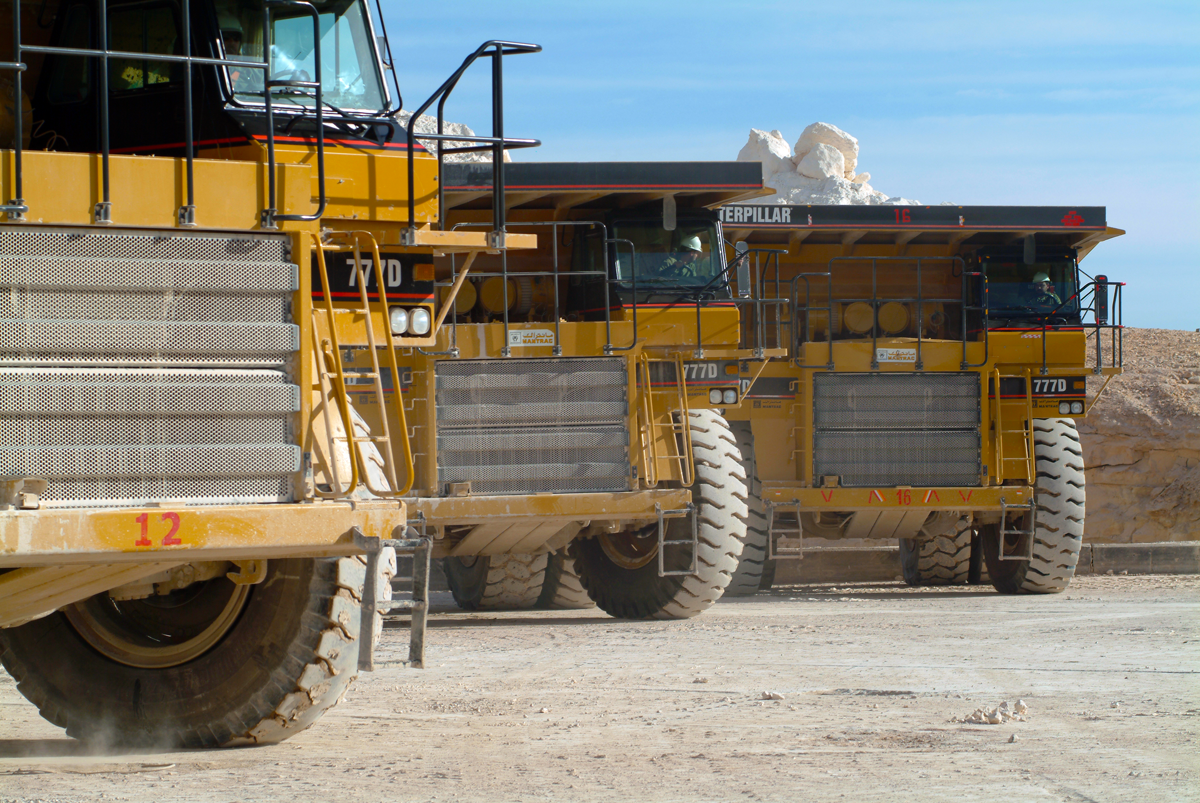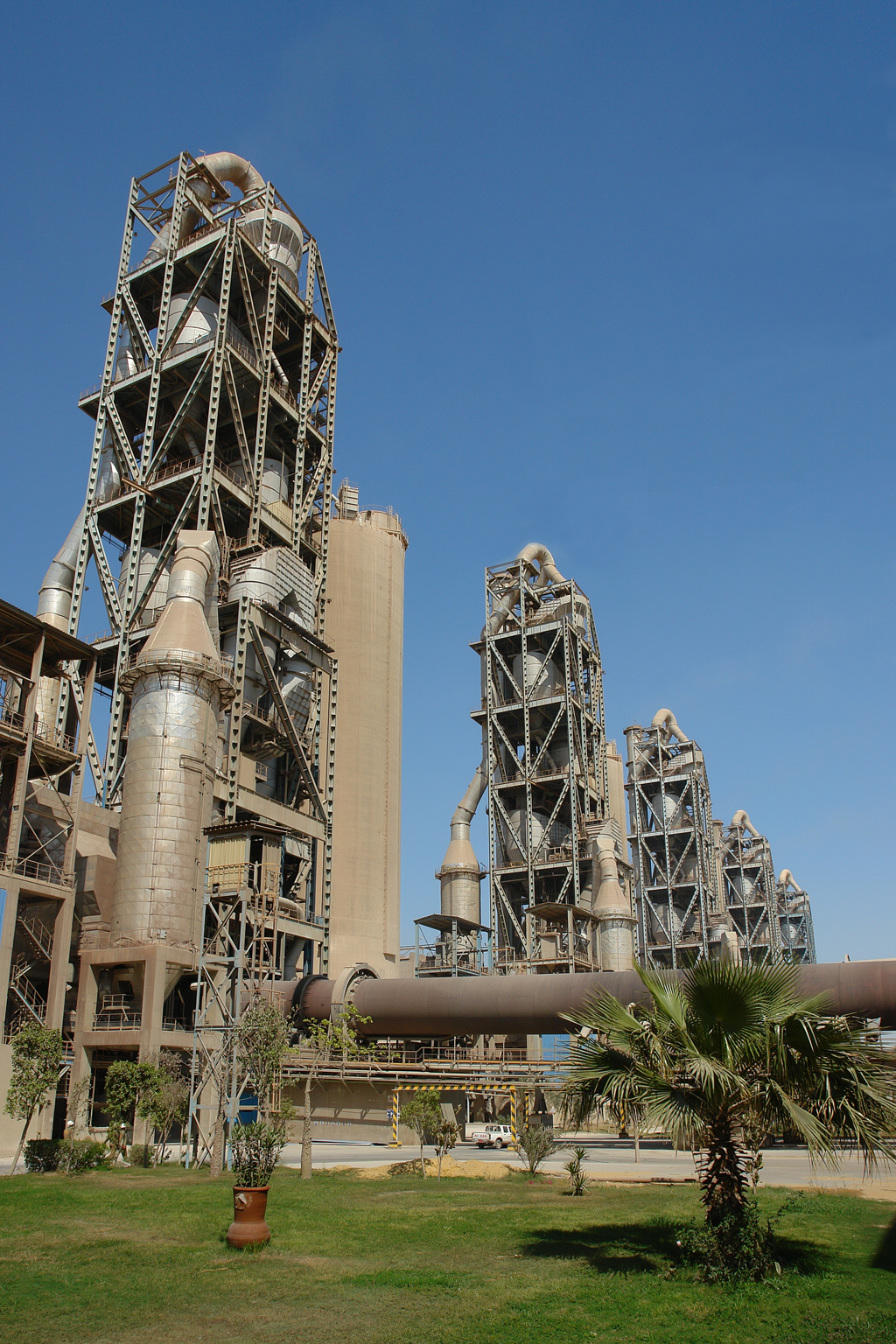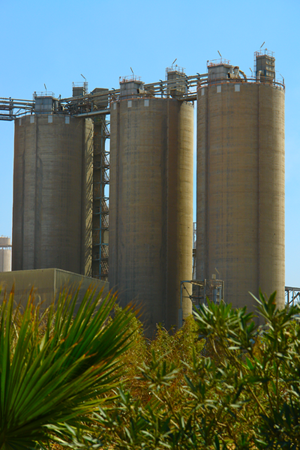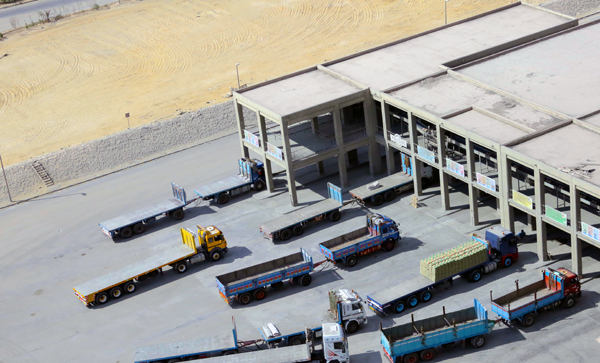Manufacturing process
From the limestone quarry to the delivery of the end product, follow every step in the cement manufacturing process.
Step 1: Mining
|
|
|
The cement manufacturing process starts from the mining of raw materials that are used in cement manufacturing, mainly limestone and clays. A limestone quarry is inside the plant area and a clays quarry is as far from the plant area as 25 km. The limestone is excavated from open cast mines after drilling and blasting and loaded onto dumpers which transport the materials and unload into hoppers of limestone crushers. The clays are excavated from open cast mines and loaded onto dumpers which transport the materials and unload into open yard storage. Then it is transported by trucks and unloaded into the hopper of a clay crusher. They are three types of clay used in cement manufacturing, namely silty clay, Zafarana clay, and Kaolin. Other raw materials are used to control the kiln feed mix design, namely sand, and iron ore. The sand and iron ore are transport from outside the plant (from different suppliers) by trucks and unloaded into open yard piles, called sand and iron ore piles. |

|
Step 2: Crushing, stacking, and reclaiming of raw materials |
|
|
|
CO2 and cement Why does the manufacture of cement produce CO2?
|
Step 3: Raw meal drying, grinding, and homogenization |
|
|
The raw mix, high grade limestone, sand, and iron ore are fed from their bins to raw mills, called air swept mills, for drying and fine grinding. The raw mill contains two chambers, separated by diaphragm, namely a drying chamber and a grinding chamber. The hot gases coming from a preheater (preheater / kiln system) enter the mill and are used in raw mills for drying. Then the drying materials enter the grinding chamber of raw mills for fine grinding. The grinding chamber contains a certain quantity of ball charge in a different sizes ranging from 30mm to 90mm. The hot gas and grinding materials mill outlet feeds to a separator which separates fine and course product. The latter, called reject, is sent to the mill inlet via an air slide for regrinding. The hot gas and fine materials enter a multistage "cyclone" to separate a fine materials and gases. The fine material, called raw meal, is collected from the multi-cyclone and then fed into an air slide for lifting called an Aeropol. The hot gases with very fine materials enter an electrostatic precipitator to separate the fine materials from gases. The very fine materials called preheater dust or electrostatic separator dust is collected from filters and fed into screw conveyors and are then mixed with the fine material in an air slide and transported to an air lift vessel via air slide. In the air lift, the raw meal is lifted to the silo by compressed air to the air slide and then stored and homogenized in a concrete silo. Raw meal extracted from the silo, now called kiln feed, is fed to the top of the preheater via an air lift called the Poldos for pyro-processing. |

|
Step 4: Clinkerization |
|
|
Cement clinker is made by pyroprocessing of kiln feed into the preheater-kiln system. The preheater-kiln system consists of a multi-stage cyclone 
preheater with five stages, combustion chamber, riser duct, rotary kiln, and grate cooler. In the preheater, the kiln feed is preheated by hot gas coming from the combustion chamber and rotary kiln. Then the preheated kiln feed is partially calcined (made powdery) in a combustion chamber and riser duct and then completely calcined in a rotary kiln as well as heated to approximately 1400 C to form clinker components C3A, C4AF, C2S, and C3S. The main source of heat is natural gas. Natural gas is fired as a main fuel (100 %) in the main burner rotary kiln and a 95% natural gas and 5.0% heavy oil combination in the combustion chamber. The fuel is used to provide the heat required to convert the kiln feed into clinker. Hot clinker discharge from the kiln drops onto the grate cooler for cooling from approximately 1350-1450 C to approximately 120 C. In the cooler, the quantity of cooling air required for clinker cooling is extracted from the atmosphere by different cooling fans and fed into the cooler chambers and pressurized through the cooler plate and clinker bed. The cooled clinker discharges from the cooler into the pan conveyor and it is transported to the clinker storage. The clinker is taken from the clinker storage to cement ball mill hoppers for cement grinding. Part of the hot air extracted from the cooler is utilized as a secondary and tertiary air for combustion in rotary kiln and combustion chamber, respectively. |
|
Step 5: Cement grinding and storage |
|

Clinker and gypsum for OPC, limestone for limestone cement, and slag for slag cement are all extracted from their respective hoppers and fed to the cement mills. The ball mill grinds the feed to a fine powder in two chambers, namely the first and second chambers. The two chambers have a certain quantity of ball charge of different sizes from 17mm to 90 mm. The mill discharge is fed to a bucket elevator which takes the material to a separator which separates fine and coarse product. The latter is sent to the mill inlet for regrinding and the final product is stored in concrete silos. |
|
Step 6: Packing |
|
|
Cement extracted from silos is conveyed to the automatic electronic packers where it is packed in 50 kg bags and dispatched in trucks. 
|
|






